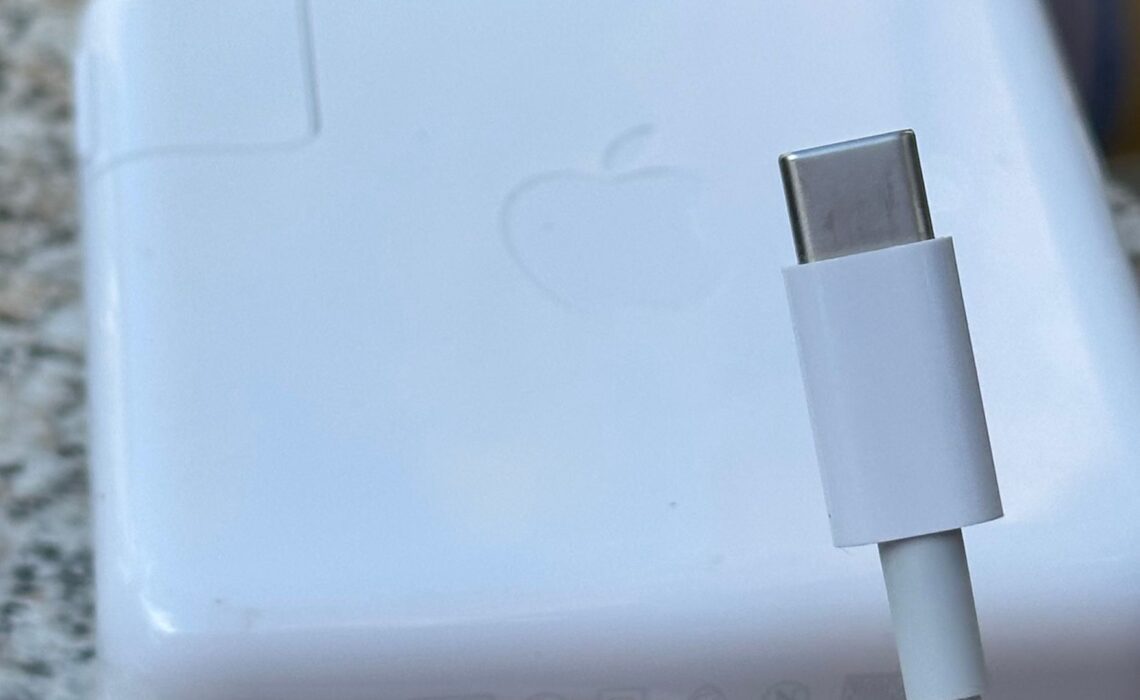
*A version of this story ran/aired on USA Today *
Apple’s recent shift from a lightning connector to USB-C for the iPhone 15 is a welcome relief for many of us who want all of our go-to tech accessories to play nice in the sandbox together.
After years of carting around a separate connector just for iPhones, the same charger we use for most headphones, laptops, and gaming consoles now works for the newest iPhone, and we think that’s great all the way around. No longer needing a proprietary connector means less cord clutter overall. But it also means we have to be careful what we plug into!
Steer clear of super cheap gas-station chargers and $10 eBay or Marketplace knock-off cords and bricks that might fry your brand-new phone faster than, well, lightning. (Pardon the pun…)
CAN YOU USE ANY USB-C CHARGER FOR iPHONE 15?
Not all USB-C Connectors are Created Equally!
Those cute-colored charging cords and bricks that you get at gas stations can be fine in a pinch, but those are the kinds of cables that cause the most problems. One of the biggest ways to know you have an issue is if you feel your device getting physically hot while you’re charging it.
Stick with reputable sellers, such as Apple, Anker, Belkin, Cable Matters, and Monoprice, or one that says it’s been certified by a trade group called the USB Implementers Forum, or USB-IF. Their website says it tests connectors it recommends through 10,000 plugs and unplugs.
WHICH USB-C CORD IS THE BEST?
Apple’s own USB-C connectors are usually the best to use with your Apple gadgets, says Hank Hulan, Sr. Manager in Consumer Electronics Engineering and Quality at Asurion. “Apple chargers will be fully tested and UL (Underwriters Laboratory) certified.” That’s not always the case with bargain basement cables and chargers. “Apple chargers will also be compliant with California Energy Efficiency standards (analogous to Energy Star for appliances) and are tested against numerous EU and APAC safety regulations,” he explained.
Hulan’s colleague, Asurion Innovation Lab Technologist Nate Friend, who’s busy testing all of the latest Apple gadgets for these exact kinds of issues, agrees, “Apple chargers and cables have confirmed compatibility, whereas other chargers may not work as expected.” Friend explained in an email, “Cheap chargers may take longer for data transfers. Pro tip: for the fastest iPhone 15 Pro data transfer speeds, use a USB-C 3.0 [Thunderbolt] cable from Apple.”
CAN YOU CHARGE YOUR iPHONE FROM YOUR COMPUTER?
When I asked Apple about this, they directed me to their own support page, which states,
“You can charge your iPhone with a USB-C cable and power adapter compliant with the USB-C standard, including USB Power Delivery — such as the cable that comes with your iPhone. These cables and power adapters are widely available from Apple and other manufacturers. If you have a 20W USB-C power adapter or higher-wattage USB-C power adapter — like the one that came with your Mac laptop — you can use it with your iPhone for faster charging. You can also charge your iPhone by connecting it to the USB-C port on your computer.”
Some tech repair experts say it’s possible to fry your phone if you plug a low-quality charger into a high-voltage outlet, but for the most part, having a dedicated USB-C charger from a reputable manufacturer should be enough to keep your gadgets safe.
“It’s highly unlikely that you’ll actually damage your phone using the ‘wrong’ charger, Hulan says. “Phones have advanced circuitry including a PCM (power control module) that prevents “overcharging.” The worst case is that you use an underpowered charger, and it takes longer than normal to reach full charge.”
My advice? Don’t overthink it. Get a decent cable that manages fast charging, and be sure to label it. Keep it dry; don’t stuff the ports with sand, lint, or crumbs. Believe it or not, dropping your power adapter can cause some of the worst damage to your overall charging capabilities, so make sure all your accessories are in good working order to keep your new fancy smartphone charged up and ready for the next adventure!
